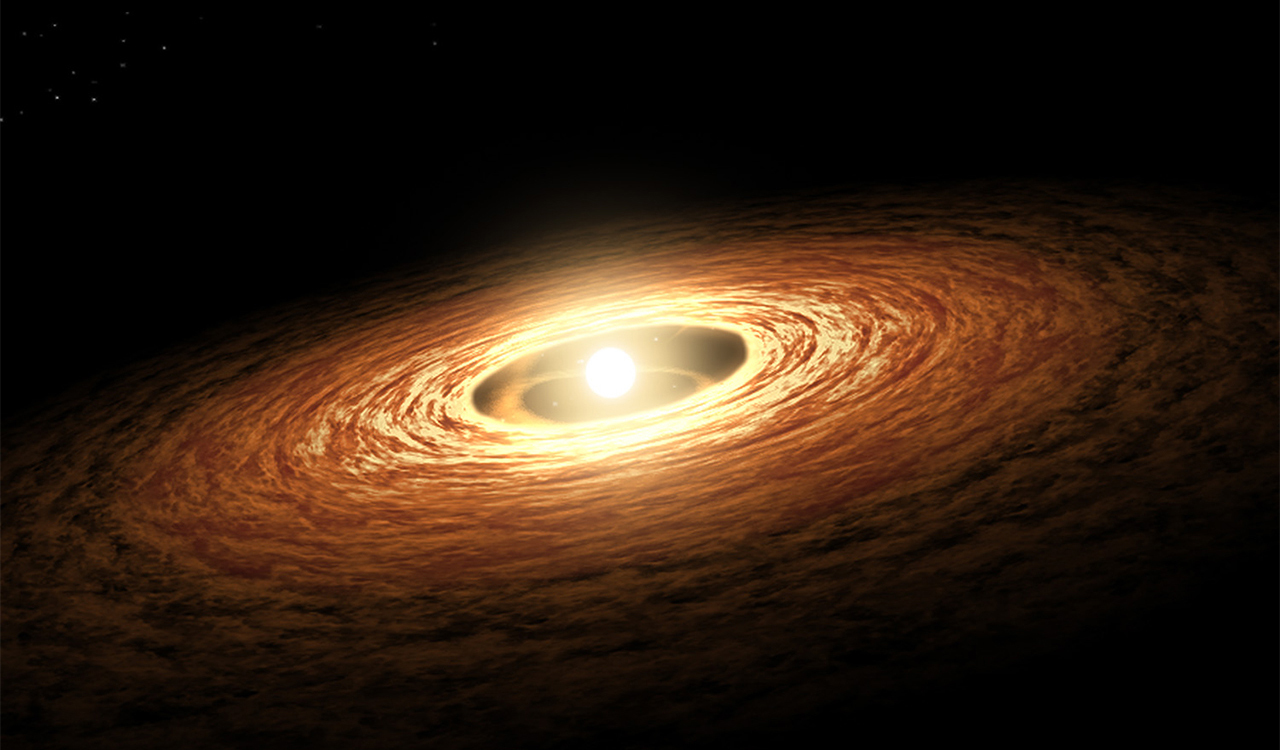Massive Lump of Stellar Dust Around a Young Star Is Actually a Forming Exoplanet

Astronomers now believe that a massive lump captured in the outside part of a disc surrounding a young star close to Earth is in the first phases of becoming an exoplanet. If they are proved to be correct, this will be the first time the accurate location of planetary accretion has been discovered.
The planetary accretion is occurring near the closest young star to our planet, TW Hydrae, approximately 194 light-years away. What is interesting is the fact that TW Hydrae’s system seems to be similar to how our solar system looked when it was in the earlier stages of formation. This means that the accretion could offer insight on how the planets surrounding us were formed.
The massive lump of dust around distant young star might be a forming exoplanet
The dust lump is rather massive, occupying a distance similar to that between the Sun and Jupiter’s orbit, and astronomers are not definitely sure that there is a forming exoplanet within it.
There is no specific rundown of how planets form, but observational proof collected until now implies the process starts with a few elements mixing through electrostatic forces until it has sufficient mass to gravitationally pull wider and wider fragments from the protoplanetary disc, the parts left behind from star formation.
As the matter that rotated into the star formed an accretion disc, so should the matter that tangles into newly shaped planets. That is what astronomer Takashi Tsukagoshi of the National Astronomical Observatory of Japan meant by a ‘circumplanetary disc.’
Identifying one would help the astronomic field understand the phases of planetary formation. However, the star’s protoplanetary disc of dust and gas is cold, meaning that it is difficult to see in wavelengths such as optical and infrared, and even though it can be captured in radio wavelengths, details can be challenging to image.
Other theories say that it could not be an early forming exoplanet after all
The Atacama Large Millimetre/submillimetre Array (ALMA) in Chile, an arrangement of radio telescopes explicitly created to study light emissions from the coldest celestial bodies in the cosmos, has made massive progress in imaging a multitude of protoplanetary discs. Until now, only a few newly formed planets have been directly captured in a protoplanetary disc, and never before a planet with a disc of its own.
In fact, it might still not be the case, as the lump may end up being something else. Some features don’t match astronomers’ predictions of circumplanetary discs, for instance, the brightness and general shape.
The differences mean it could be a gas vortex, which takes shape in the hydrodynamic flows of the outer areas of a protoplanetary disc. These vortexes have been hypothetically suggested as nurseries for the formation of planetesimals. Finding just one lump, as contrary to several, doesn’t match the predictions either.
Tsukagoshi said that he and his team will get an ever higher resolution ALMA images to show the temperature distribution in the lump of dust to look for clues of a planet inside. They also intend to observe it with the Subaru Telescope in infrared to see if hot gas is present around a probable planet. The research has been issued in The Astrophysical Journal Letters.
0 comments